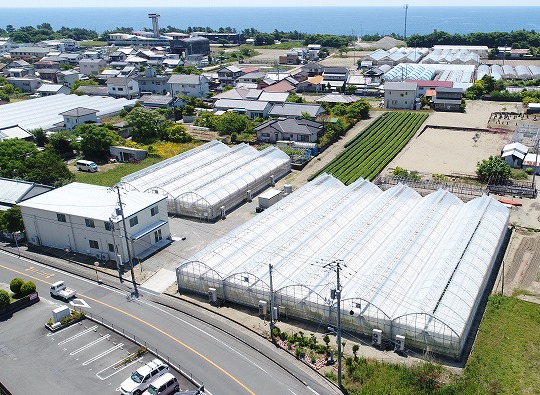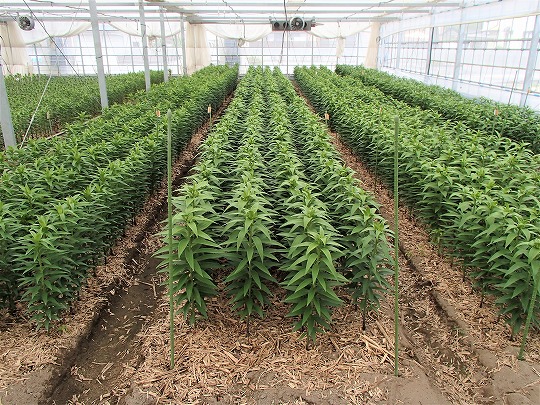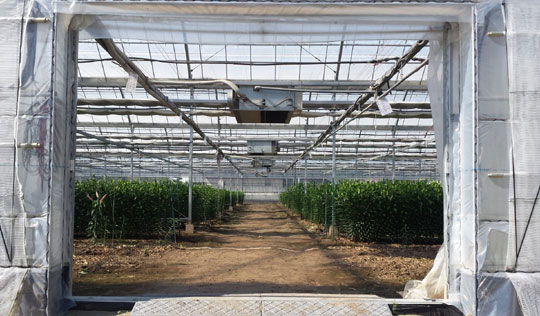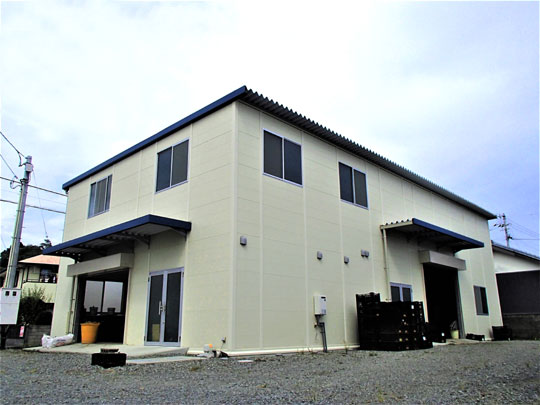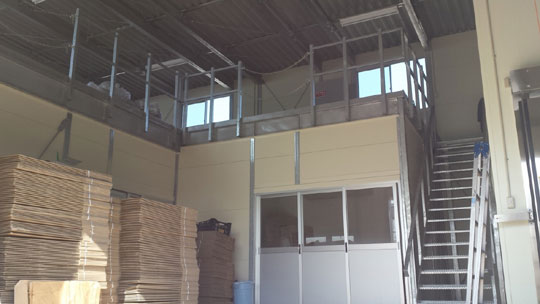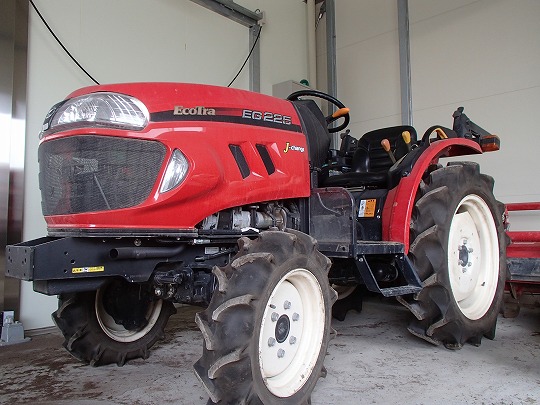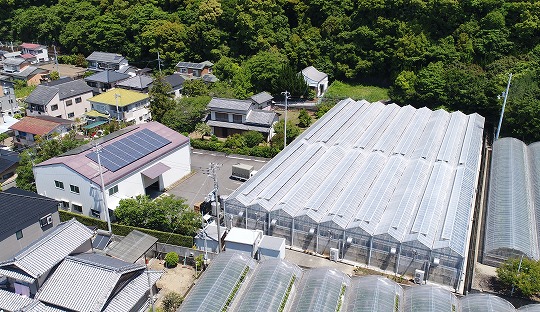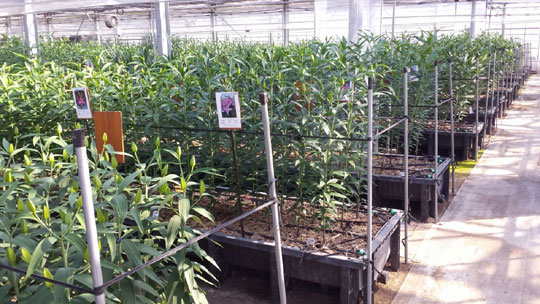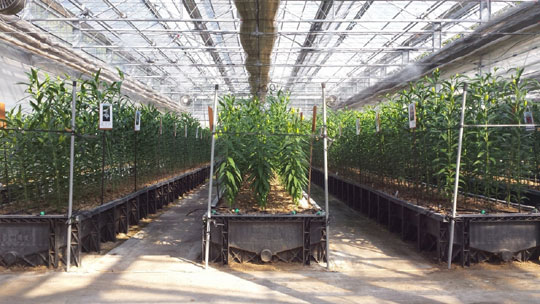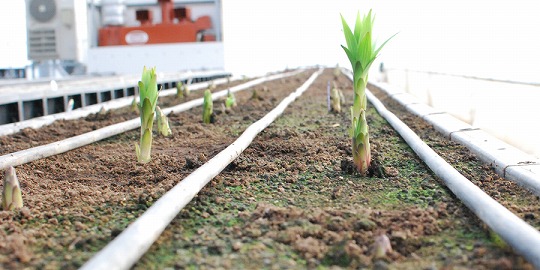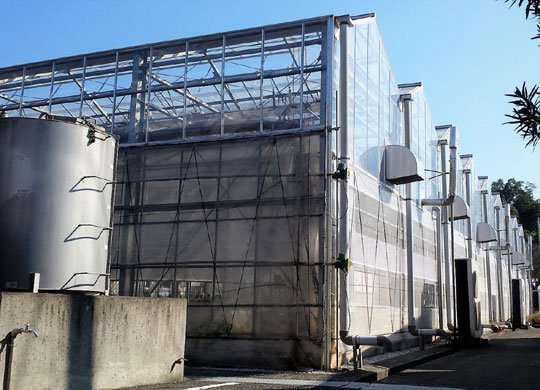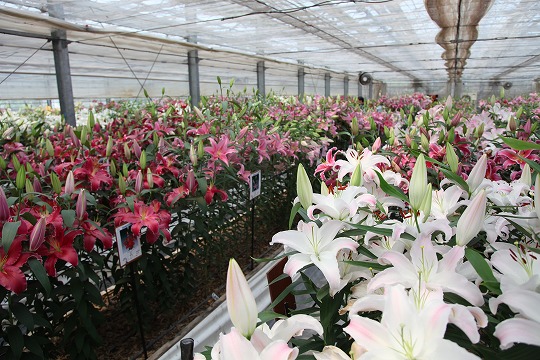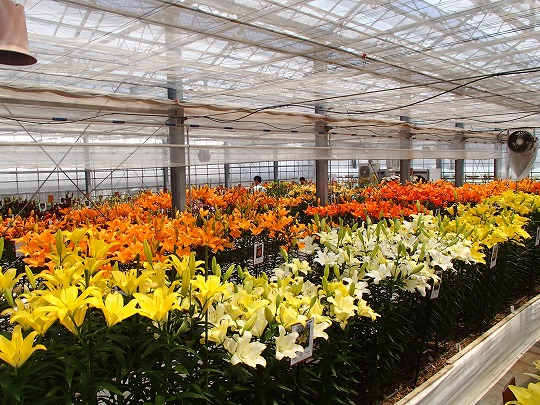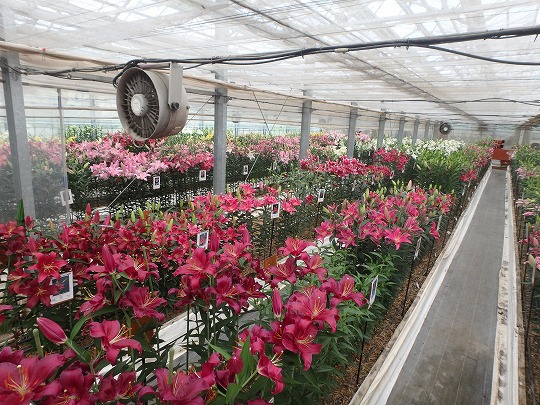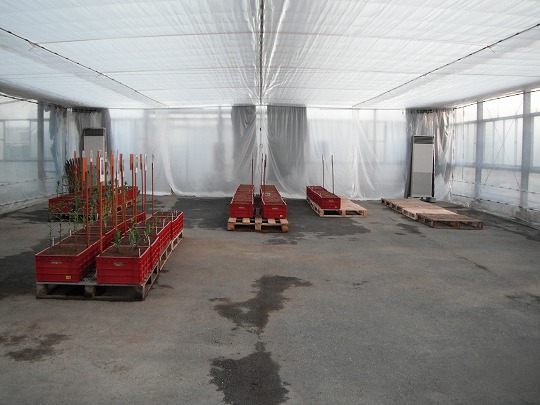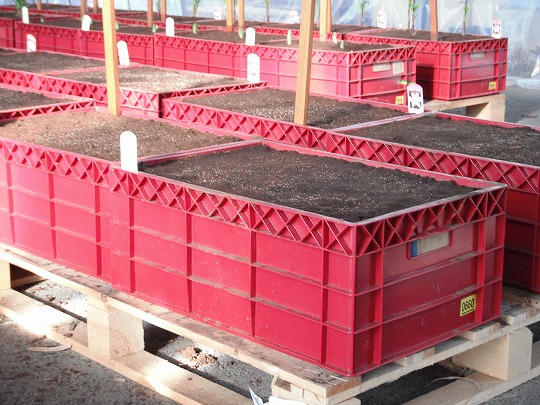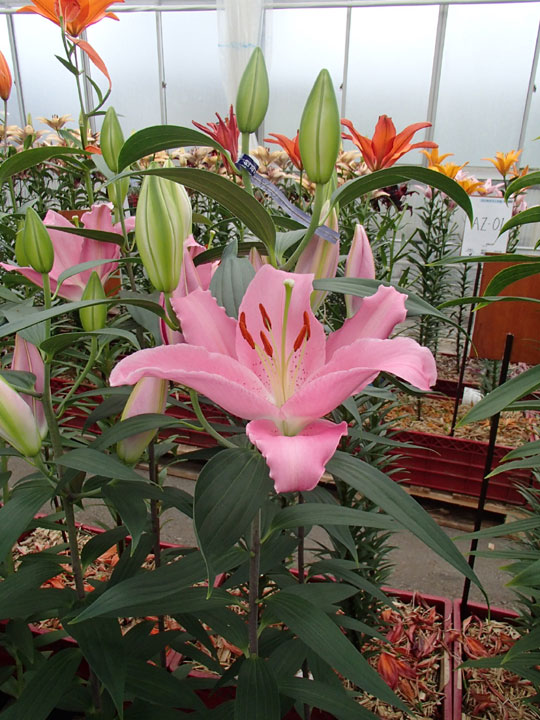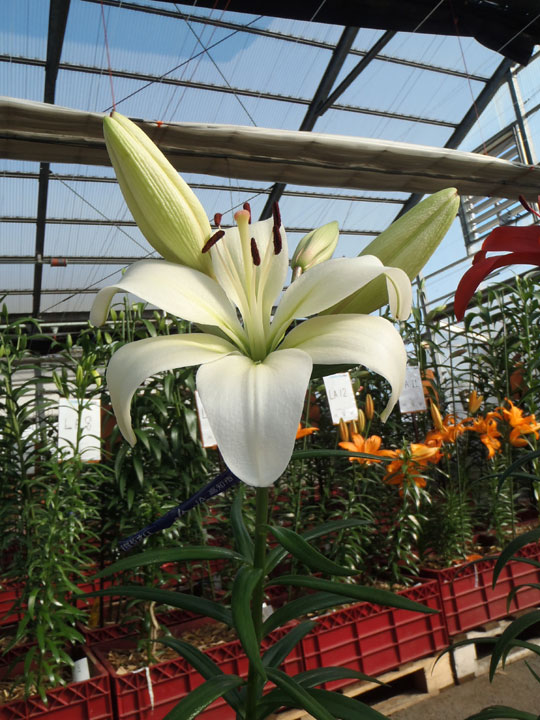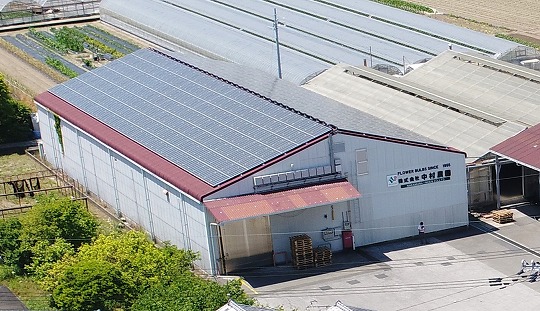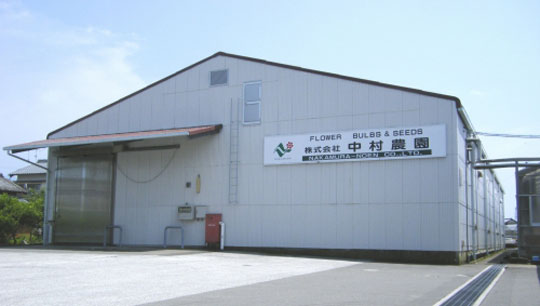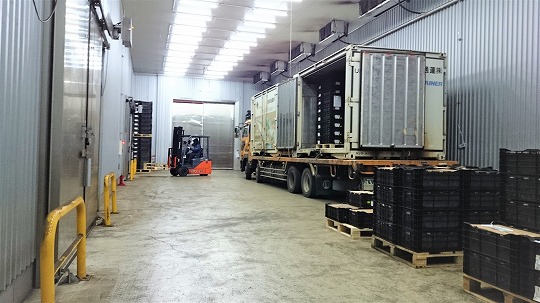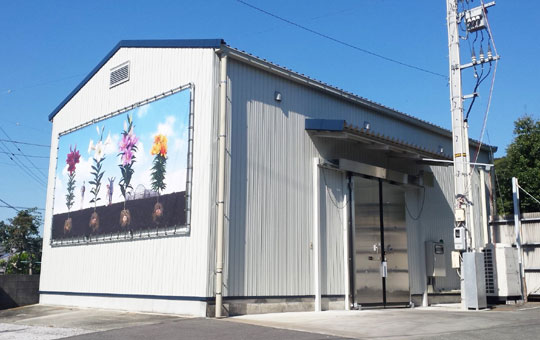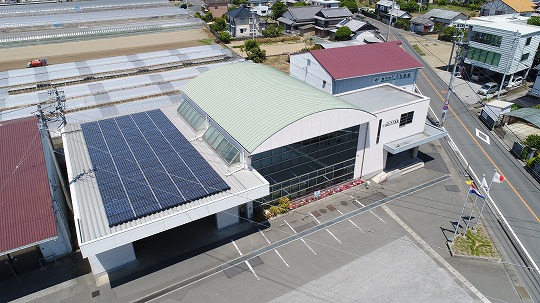Report of business trip to Holland
November 22nd, 2017
Nakamura-Noen Co., Ltd.
Mitsuteru Nakamura
I went to Holland from November 13th to 18th, and visited some bulb fields and growers to research the recent trend and the situation of crop 2017. I’d like to report as below.
Harvest in Autumn
The weather in spring was little rain and good this year, and planting went smoothly. Even though the end of April was very cold and some 2 year crop and scale fields were damaged by frost, the temperature of the whole 3 months of spring was good weather and warmer than usual years. June which is the early summer was also sunny because of high air pressure, and the most part of Holland had a long rain in July and the sunshine duration was less especially in east Holland. The growth of bulbs, after all, was ok (please refer to the graph in the last). Therefore, many growers stopped the spray to prevent botrytis earlier than usual.
However, cold wave and strong wind attacked these areas in September, and botrytis spread out and the upper part of the lilies died rapidly. In most fields, the growth stopped early, and there are many LA varieties which have less bigger sizes. This year’s crop can be said that the growth differs a lot depends on when the grower stopped the disinfection. On the other hand, the growers could start harvesting earlier and the process is about 10 days advanced, so the bulbs are coming into the exporters earlier this year.
Sprout is thin and long this year??
The previous information before my visit was the growth of LA and Asiatics was poor, so I was worried about Oriental and OT also. The production areas in east and south which I visited were not so bad, but the result was better than last year. Especially south-west area was as good as crop 2014. However, it was rare to see 20cm or 22cm bulbs of Oriental and OT like we saw in crop 2014, and at the same time, 12cm to 14cm were also rare. There was another tendency that middle – early maturing varieties such as Sorbonne were bigger than late maturing varieties such as Siberia. Some of the growers told me that the quantities of Siberia 16/18 and 18/20 after harvesting were more than expected, and they were happy to have plenty bulbs of these most salable sizes.
Regarding the number of inner scales, however, is little this year and many of the sprouts inside the bulbs were thin and long (Please see a photo in the bottom). Many growers say that the harvested LA varieties’ sprouts are comparatively high due to the decline of air and soil temperature in early autumn. For Orientals as well, the sprouts are higher than usual years according to my research. Therefore, the exporters are treating the bulbs which they received very carefully. We will also check the bulbs very carefully at arrival, and also during the storage in our special cooling facilities until delivering.
- ENLARGEMENT : 104%, SPROUT WIDTH : 97%, SPROUT HEIGHT: 107% (year on year)
While the temperature was kept warm for a long time and the harvest was delayed in September last year, this year was a severe cold wave and wind that made the growth stop early. In recent years, the weather just before harvesting influences the result in many cases. We believe that it’s important to visit the fields in this season which is the beginning of harvesting, as well as collecting information from the exporters.
Influence of other countries!?
I went to some production areas which are the same places I visited last year for comparison. In some fields, I could see that the planting density became lower even in my brief counting. Of course, I understand that density depends on growers or varieties, but I could see the change in comparison of the same varieties’ last year and this year. My impression was correct to hear the growers saying that “I changed the density to 5% lower than last year” or “To see the result of crop 2016, I decided to make density lower by 10%”.
Recently China started to buy more middle – big sized Siberia instead of smaller sizes. Such change of China who is the biggest consumer in the world influences the industry a lot, and exporters give growers this information and some growers changed the planting density lower to make bigger bulbs. Such fields can use the sunshine more efficiently, and those bulbs often become bigger and stronger. Stronger bulbs are very welcome for Japanese consumers as well, so this tendency might bring a good influence to us as well.
Too much OT
As previous years, OT varieties are a hot topic in Holland. OT is gradually becoming acceptable depending on varieties in Japan, while the production acreage in Holland has been a rapid increase of 25% more compared to the last year.
On the other hand, some white OT can’t find the buyers even though the production was increased. Conca D’or and Robina which have big demands in China can be sold only if they are particular sizes, but no others at all. Every time I visit Holland in this season, exporters and growers often ask me our opinion about new varieties and production plan. I believe that such communication is important to prevent the mismatch of demand and production, and also to save varieties we need.
Bulb growers plan their production considering many things. We hope to pass them the real opinions of lily forcers in Japan. We hope to have your help and support.



